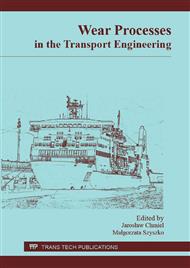p.11
p.21
p.31
p.41
p.51
p.61
p.71
p.81
p.91
Cavitation Wear of CuZn10 Alloy in As-Cast State and after Plastic Working and Annealing
Abstract:
Copper alloys due to their very good corrosion properties are often used to a fabrication of components that are subjected to both a cavitational destruction and a corrosive action of an environment, e.g.. ships’ propellers, sliding elements, pump parts etc. The course of cavitational destruction depends mainly on a material’s structure (a grain size, a type of inclusions, morphology and phase distribution, etc.) but also on the load distribution, and a possible activity of chemical, electrochemical and thermal processes near cavitation bubbles. Properties of a material that is subjected to the cavitational damage are strongly affected by its structure formed upon manufacturing or applied processing. In the present paper, results of the cavitational resistance analysis of CuZn10 alloy in the as cast state (the grain size of 200 μm) and after thermomechanical processing (the grain size of 10 or 200 μm) evaluated on vibrational laboratory stand in accordance with ASTM G-32 standard, are shown.
Info:
Periodical:
Pages:
51-60
Citation:
Online since:
July 2016
Authors:
Price:
Сopyright:
© 2016 Trans Tech Publications Ltd. All Rights Reserved
Share:
Citation:


